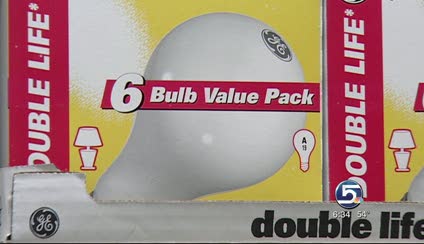Estimated read time: 3-4 minutes
This archived news story is available only for your personal, non-commercial use. Information in the story may be outdated or superseded by additional information. Reading or replaying the story in its archived form does not constitute a republication of the story.
HOLLADAY -- Many Americans haven't realized it yet, but the standard light bulb may soon go the way of the sundial and the buggy whip.
The most popular models of the famed Edison light bulb will be phased out over the next several years because of a federal law passed in 2007 -- but already there are moves afoot in Congress to save the traditional bulb.
Thomas Edison invented the first practical electric light in 1879, and his incandescent bulb changed the world. But in 2007, Congress and then-President George W. Bush approved new efficiency standards that say, in effect, "Sorry, Tom. Not good enough."
The shelves at home improvement stores are now filled with a bewildering array of light bulb options. There are compact fluorescents, LEDs, halogens and hybrids in addition to the familiar incandescent bulbs.
I don't mind saving energy. I guess I don't like being forced to do so.
–Consumer Mark Funk
"Compact fluorescents are practically flying off the shelves nowadays," said Todd Smith, electrical specialist at the Home Depot store in Holladay.
The compact fluorescent bulbs, known as CFLs, last far longer than incandescent bulbs and use one-fourth the electricity.
"In terms of energy efficiency, there's no comparison," Smith said.
But some customers are hoarding incandescent bulbs because of the big change anticipated to come less than a year from now. Beginning on January 1, 2012, manufacturers will phase out the 100 watt incandescent bulb. The 75-, 60- and 40-watt versions will disappear in the two following years.
The change is due to the Federal Energy Independence and Security Act passed by the Congress in 2007 and signed into law by President George W. Bush. It set new federal efficiency standards, which many incandescent bulbs will not meet.
Home Depot shopper Rick Funk expressed annoyance at federal intrusion into such matters. "Well, I kind of think that there's probably too much regulation," Funk said. "I think it's kind of up to people's choice on what kind of light bulbs they want to use."
There are also practical objections to the new-generation bulbs. Many people prefer the color of incandescent bulbs, especially for such tasks as applying makeup. Others can't stand the way fluorescents stutter or slowly flicker to life when the switch is thrown.
The federal act does not ban incandescent technology; it simply sets minimum efficiency requirements for lamps.
"It's a little irritating sometimes with the slow start-up time," said Home Depot shopper Terry Farr. "But once they're at full light capacity, they're fine."
Manufacturers have made progress on some of those issues, improving the performance in recent years and offering bulbs that produce several different colors of light.
One of the biggest barriers against widespread acceptance of the new bulbs has been a relatively high purchase price. But lately, that disadvantage has disappeared for many shoppers.
Prices for compact fluorescent bulbs have dropped drastically. That's partly because Rocky Mountain Power pays subsidies to manufacturers to bring down the price.
"Helping customers be more energy efficient is a resource just like a power plant, " said Rocky Mountain Power spokesperson Dave Eskelsen. "And it's less expensive than building a new power plant. "
Back at the Home Depot, shopper Mark Funk said, "I don't mind saving energy. I guess I don't like being forced to do so."
Home Depot employees say most shoppers seem to like the new bulbs and expect to save money in the long run.
Nevertheless, Texas Congressman Ron Paul has proposed a repeal of the 2007 law, and conservative organizations have started a petition drive.
E-mail: hollenhorst@ksl.com








